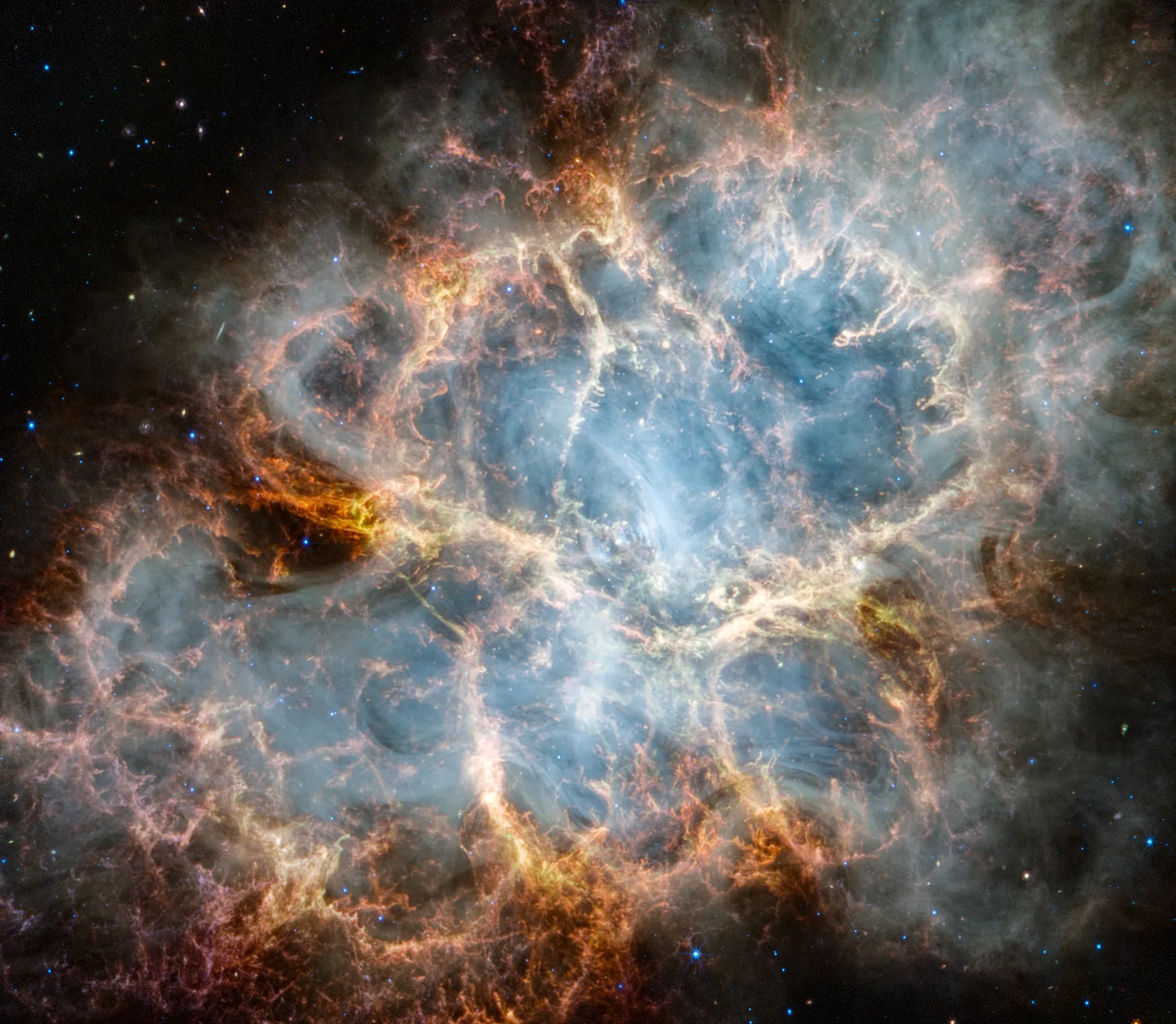The James Webb Space Telescope captures new details of the Crab Nebula, 6,500 light-years away, in this image released on Oct. 30, 2023. While these remains of an exploded star have been well-studied by multiple observatories, including the Hubble Space Telescope, Webb’s infrared sensitivity and resolution offer new clues into the makeup and origins of this scene.
Thanks to Webb’s Near-Infrared Camera (NIRCam) and Mid-Infrared Instrument (MIRI), scientists were able to determine the composition of the material ejected from the explosion. The supernova remnant is comprised of several different components, including doubly ionized sulfur (represented in red-orange), ionized iron (blue), dust (yellow-white and green), and synchrotron emission (white). In this image, colors were assigned to different filters from Webb’s NIRCam and MIRI: blue (F162M), light blue (F480M), cyan (F560W), green (F1130W), orange (F1800W), and red (F2100W).
Take a video tour of this image.
Image Credit: NASA, ESA, CSA, STScI, T. Temim (Princeton University)
在2023年10月30日发布的这张照片中,詹姆斯·韦伯太空望远镜拍摄了6,500光年之外的蟹状星云的新细节。虽然包括哈勃太空望远镜在内的多个天文台已经对这些爆炸恒星的残骸进行了充分的研究,但韦伯的红外灵敏度和分辨率为这一场景的构成和起源提供了新的线索。
这张由NASA的詹姆斯韦伯太空望远镜的NIRCam(近红外相机)和MIRI(中红外仪器)拍摄的图像揭示了蟹状星云红外光下的新细节。超新星遗迹由几种不同的成分组成,包括双电离硫(红橙色表示),电离铁(蓝色表示),尘埃(黄白色和绿色表示),以及同步辐射(白色表示)。在这张图片中,韦伯NIRCam和MIRI的不同滤镜分配了不同的颜色:蓝色(F162M)、浅蓝色(F480M)、青色(F560W)、绿色(F1130W)、橙色(F1800W)和红色(F2100W)。
影像来源:NASA, ESA, CSA, STScI, T. Temim (Princeton University).







